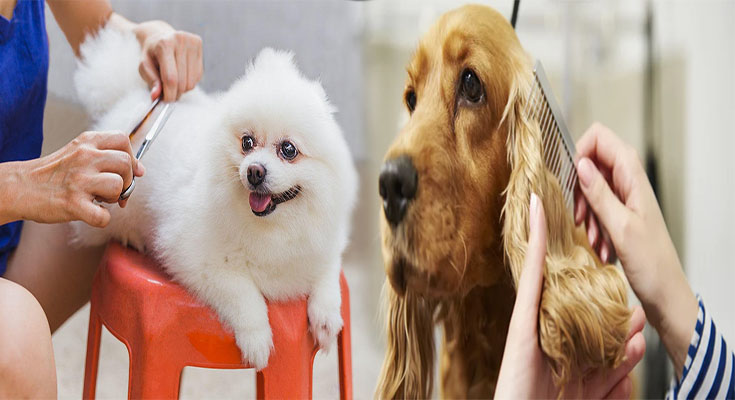Grooming your pet at home can be a great way to bond with your pet and provide it with regular care. Grooming can help prevent health problems, such as hairballs and fleas, while keeping your dog or cat healthy and looking its best. Grooming at home also allows you to monitor your pet’s condition more closely so that you can catch any problems early on. In this article we look at what grooming tools are needed including brushes, combs, scissors etc… The steps involved in grooming plus tips on how to start with young puppies or kittens who haven’t been groomed before. We also discuss when it might be better for you to go to the vet instead of attempting do-it-yourself grooming
Brush your pet regularly.
Brush your pet regularly.
Brushing your dog or cat’s coat is essential to keeping their skin and fur healthy, but it’s also important to brush the inside of their mouth. Brushing helps remove bacteria from their teeth and gums, which can reduce the risk of gum disease and tooth decay.
Brush your pet at least once a week for 10 minutes at a time using a soft-bristled brush designed specifically for dogs or cats (never use human brushes). Gently massage their gums while brushing so that you don’t hurt them–start with one tooth at a time, then move onto another area as needed until you’ve done all four sides of each tooth in turn.
Get them used to the tools of the trade.
The first step to grooming your pet is getting them used to the tools of the trade. You can do this by letting them sniff a brush or comb before you actually start grooming, and rewarding good behavior with treats. If your pet is scared, try making grooming time more fun by playing with toys or singing songs while doing their nails (if they don’t mind having their nails trimmed). Don’t force your pet into doing something they don’t want to do; if they’re not comfortable with something in particular then move on until they are ready!
Set up a regular schedule for grooming your pet.
It’s important to set up a regular grooming schedule for your pet. Regular grooming helps keep your pet healthy and clean, which can reduce the risk of them getting fleas or other pests that could lead to illness or discomfort.
Regularly brushing and combing your dog will also help prevent them from developing mats in their fur, which can be painful for them if they get stuck in their skin while trying to get out of them! You should also brush their teeth daily so they don’t develop plaque buildup on their teeth that could damage their gums over time (and cause bad breath).
Check for wounds, sores and fleas.
When grooming your pet, it’s important to check for wounds and sores. You can do this by running your hand along their body, looking for any redness or swelling. If you find anything that looks like a wound or sore, take the animal to a veterinarian immediately.
If the dog has fleas or ticks on its skin, use a flea comb to remove them before washing the dog with soap and water in order to prevent infection from developing around these parasites’ bites.
Know the risks before trimming nails on dogs or cats.
Trimming your pet’s nails at home is a great idea, but it’s important to know the risks before you get started. If you cut too short and hit the quick, your pet will experience pain and bleeding. It’s also possible that trimming too close to the quick can cause permanent damage to their nails.
If you notice any signs of discomfort in your dog or cat while trimming their nails (e.g., pawing at their paws), stop immediately!
Grooming at home is a great way to bond with your pet and provide it with regular care
Grooming at home is a great way to bond with your pet and provide it with regular care. It also gives you an opportunity to learn about your pet’s body, which will help during any medical emergencies.
You can make grooming a routine part of the day, so that both you and your dog or cat are comfortable with it. This will make things easier when it comes time for trimming nails or cleaning ears, teeth, paws or belly button! If necessary (or desired), teach them how much they enjoy being groomed by practicing positive reinforcement techniques like treats or praise as they do each step correctly–this will reinforce good behavior so that they associate being groomed as something good rather than bad!
Grooming your pet at home is a great way to bond with them and provide regular care. It can also help identify any issues that may need attention from a professional. While it’s important to be careful when trimming nails or brushing fur, these tips will make the process easier for both you and your furry buddy!





